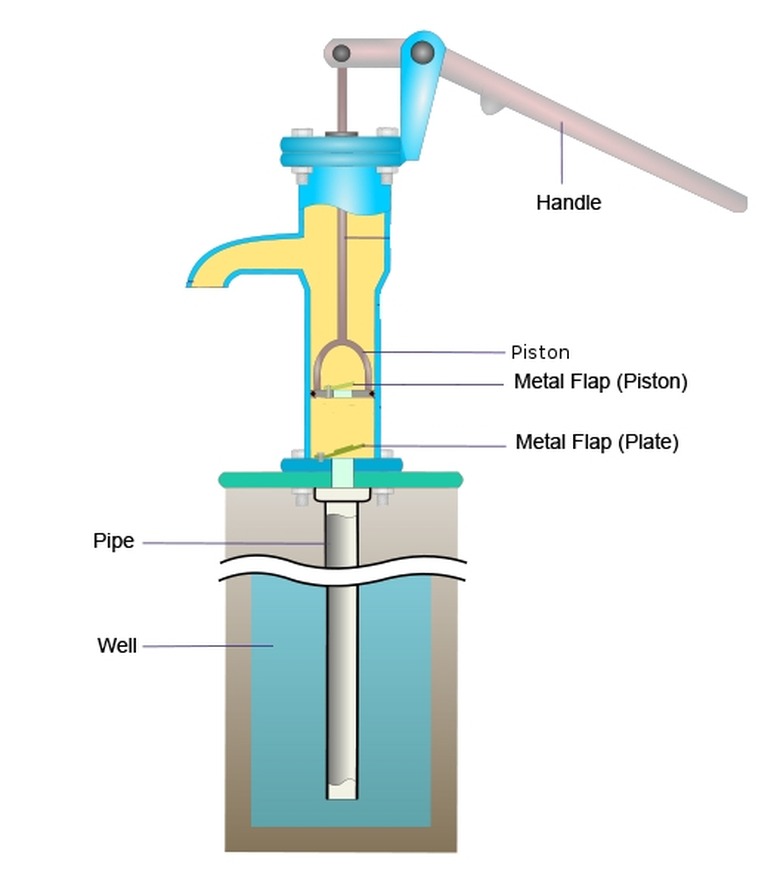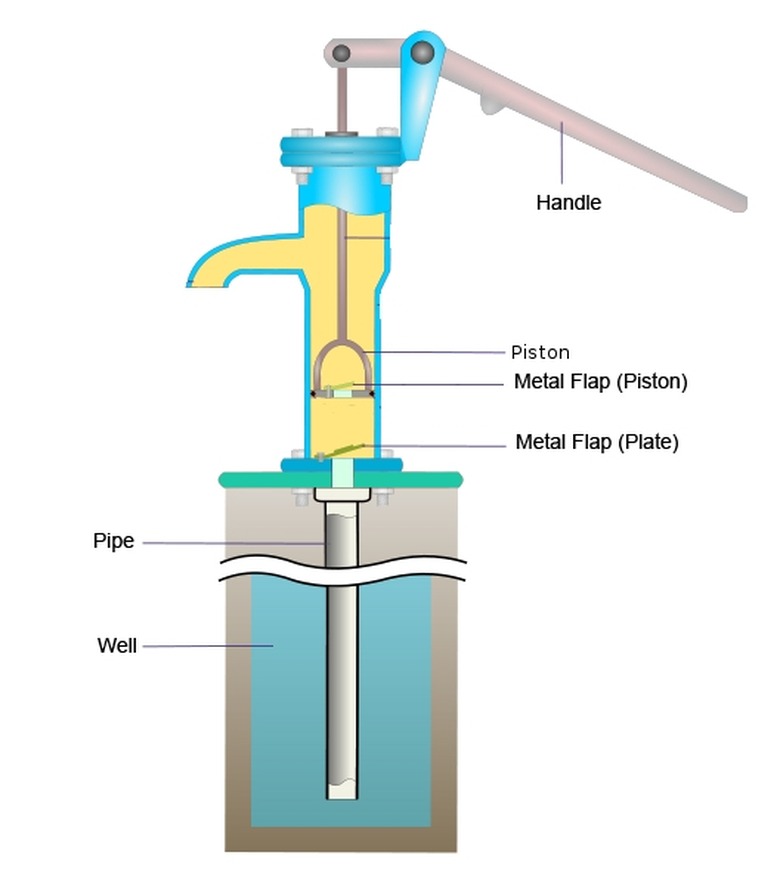How Does A Pitcher Pump Work?
Introduction
Introduction
For hundreds of years, pitcher pumps have allowed people to extract water from underground wells with relatively little effort (compared to hauling buckets from a stream), expense (compared to building aquaducts to divert melting ice from the mountains) and danger of contamination (compared to an open well with a rope-and-bucket dipping system). The pitcher pump system uses a series of special pistons to create a vacuum that allows the atmosphere's natural pressure to push water up through a pipe.
Mechanism: The Down Swing
Mechanism: The Down Swing
To operate a pitcher pump, the user must push the long handle up and down repeatedly. The handle connects to a special piston with a hole in the center and a metal flap attached with a hinge (Figure 1). When the handle is up, the piston is at its lowest position. When the handle is pulled down, the piston moves up toward its highest position.
If there is no water in the pipes, pulling the handle down raises the piston, which increases the total volume of the pipe and causes a slight drop in pressure. To equalize this pressure, air from the surface starts flowing through the hole in the piston down to the pipe. This air flow catches the metal flap and pushes it over the hole, sealing the piston.
Between the piston and the bottom of the pipe is a stationary, sealed metal plate with a hole and hinged metal flap (Figure 1). As the piston continues to move up, the volume between the plate and the piston continues to increase, which decreases the pressure inside the space.
Every pitcher pump includes a small, passive tube that runs from the surface down to the well. This is done to pressurize the well by exposing it to the earth's atmosphere. When the pressure between the plate and piston decreases, air from the atmosphere rushes into the tube and pushes against the well water in an attempt to equalize the pressure. This downward pressure from the tube forces water up into the pipe, decreasing the volume between the water and the metal plate, increasing pressure. This pressure forces the flap open as air rushes in to equalize pressure in the plate-piston space. At this point, the handle is at its highest position.
Mechanism: The Up Swing
Mechanism: The Up Swing
Pushing the handle up moves the piston down, increasing pressure inside the chamber. To equalize the pressure, air flows down through the metal plate, causing the flap to flip shut. By flipping shut, the pressure between the plate and the well is locked into place, suspending the water at its current height inside the pipe.
When the piston moves down and the plate is sealed shut, the pressure between them increases. This flips the piston's metal flap open, allowing the pressure to equalize with the atmosphere. When the piston moves up again, it reduces the pressure to sub-atmospheric conditions and allowing air from the tube to push up the water even farther.
Mechanism: Pouring The Water
Mechanism: Pouring The Water
After a few up-and-down swing cycles, the water in the pipe finally reaches the stationary plate. Once this happens, the "up" swing draws water through the hole in the plate. During the upswing, a drop in pressure causes water to flow back down through the hole until the metal flap quickly flips closed, trapping the water.
When the piston presses down on the surface of this trapped water, the water flows into the top of the chamber through the hole in the piston until it has reached its lowest position. The next "down" swing causes the piston's metal flap to flip closed–and the piston lifts the water up and out the faucet.
References
Cite This Article
MLA
Pasquesi, Andy. "How Does A Pitcher Pump Work?" sciencing.com, https://www.sciencing.com/pitcher-pump-work-5343862/. 24 April 2017.
APA
Pasquesi, Andy. (2017, April 24). How Does A Pitcher Pump Work?. sciencing.com. Retrieved from https://www.sciencing.com/pitcher-pump-work-5343862/
Chicago
Pasquesi, Andy. How Does A Pitcher Pump Work? last modified March 24, 2022. https://www.sciencing.com/pitcher-pump-work-5343862/

